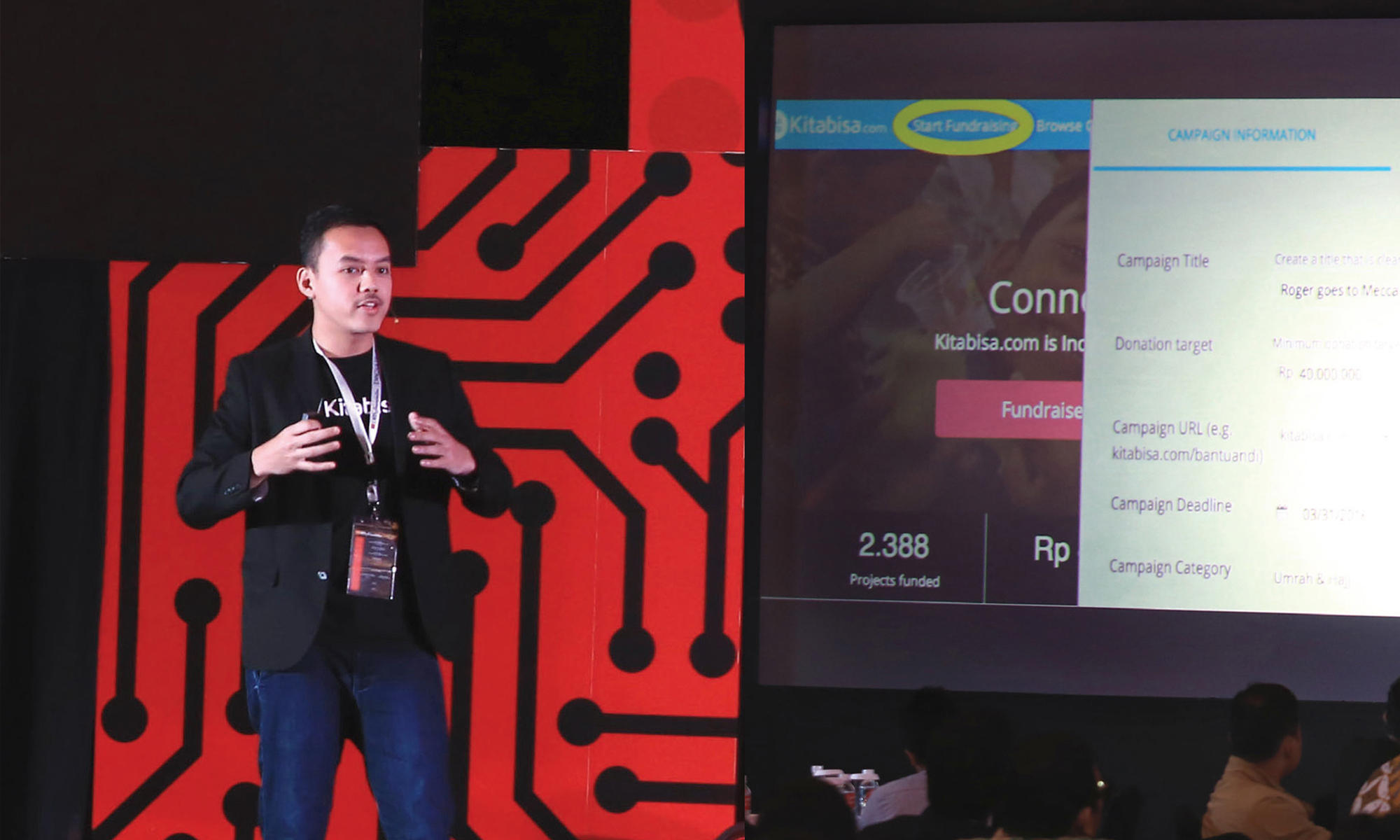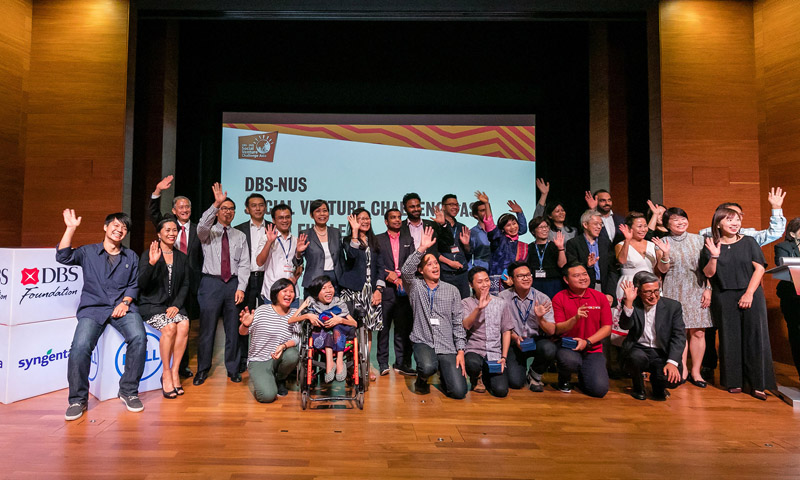Experts and practitioners share their insights on establishing and running a successful social enterprise
At first glance, Kitabisa.com looks like one of the many crowdfunding websites in the market that connect people in need of funds with potential investors. Yet, a closer look reveals that the fundraising campaigns on the site are aimed at helping others, whether for disaster relief or paying medical bills.
Kitabisa facilitates such efforts through personal stories, real-time donations, and a transparent account of funds from donors. According to Kitabisa CEO Muhammad Alfatih Timur, these features are helping people to raise funds online in a more transparent and efficient way.
Speaking at the second DBS Foundation Social Enterprise Summit held on 24th October 2017, Mr Timur related a story of a mother who managed to raise IDR 500 million (SGD 45,000) to pay for the medical bills for her baby, who had contracted meningitis and was in a coma for over five months. Indeed, around 60 to 70 per cent of campaigns on Kitabisa are medical in nature.
"Kitabisa’s makes it easier for people to ask for help. Before, people used to be suspicious and hesitate when someone approached them for raising funds. Now, they can see what people are raising funds for through the stories on Kitabisa," said Mr Timur.
Besides individual campaigns, non-profit organisations have also used the Kitabisa platform. The Red Cross, for instance, successfully raised funds for a blood-donor bus that featured selfies of all the donors on it.
Compared to commercial entities, Mr Timur said that organisations with a social mission needed to be more patient. "As a social entrepreneur you cannot expect very fast results or very fast growth – it takes a while! Be patient and trust your team, yourself and your mission. Otherwise you would be easily distracted by other things that sound more exciting than what you are doing," he said.
He also noted that social entrepreneurs had a tendency to focus too much on their beneficiaries and not enough on the customers who pay the bills.
"Social entrepreneurs have multiple stakeholders; you can have customers and beneficiaries at the same time. Customers are the ones who are paying; beneficiaries are the ones who are impacted," he said.
"Therefore, when we focus on beneficiaries, we don’t really get many quality campaigns because we only focused on who we can help."
Partnering for success
Entrepreneurs seeking to make a social impact must first be clear on the problem they are trying to address as a starting point. In his keynote address at the summit, Prof. Dr. Ir. Kuntoro Mangkusubroto, the founder of the School of Business and Management of the Bandung Institute of Technology, shared his experience of helping people in Aceh recover from the devastating effects of the Asian Tsunami in 2004.
"I felt a rush of love for those who are suffering from this disaster. This motivated me to address the question: 'Whose lives do I want to make more comfortable?' Logically, debris must be cleaned, houses must be built because people have limited patience when it comes to living in temporary tents," he told his audience.
He added: "That question empowered me to move forward rather than getting caught in thinking about the ideal steps to rebuild disaster-struck provinces, which I did not know anyway."
Yet, many social entrepreneurs may? not possess the resources and expertise on their own to achieve their mission, and will require assistance from other organisations. Today, corporates are working with startups and social impact entrepreneurs through channels such as acceleration programs, investments, and collaborative R&D. Meanwhile, more social enterprises are tying up with corporations to get support for their goals.
One such social enterprise is Nazava, which aims to provide safe drinking water to those who need it through a filter it developed that cleans water from wells, taps or lakes. The company has partnered a number of private sector parties to help them realise this vision. Through the DBS Foundation, for instance, it was connected with branding specialist Landor, who helped them design a logo and a hashtag – #safewaterrevolution – urging others to join their mission.
Nazava also joined an organisation known as Nexus in Cambodia, which helps it get access to carbon credits. As users of the firm's product do not have to boil their water, they are able to reduce carbon emissions and earn credits.
Beyond the private sector, the company also works with universities to undertake research that helps to determine and measure the impact of its products on the health of the communities it operates in.
I would recommend that as a social enterprise, reach out to universities as their students are an excellent resource to work with.
Many large corporates now offer a variety of assistance programmes to start-ups and social enterprises. Google for Non-profits, for instance, is an initiative that offers grants in the form of free or discounted product support for non-profit organisations.
Another tech giant, Microsoft, has an initiative that provides free software to start-ups, including social enterprises. To increase their chances of qualifying for such assistance, Irving Hutagalung, Audience Evangelism Manager at Microsoft, advised social enterprises to be very clear about the type of help they require.
"Many times, it is hard for a social enterprise to explain how a large organisation can help them. I am approached by social entrepreneurs who ask for help – ‘Anything will do’, they say," he said.
"That really doesn’t help. You must be very specific on the support you need and how a partnership can benefit both."
Quick tips
- Be Patient — Unlike purely commercial businesses, social enterprises need more time to achieve their goals.
- Don't forget the customer — Many social businesses focus on their beneficiaries and neglect their customers. But the customers are the ones paying the bills.
- Be clear on your business model — Social entrepreneurs must be able to explain their business model clearly to get assistance and attract investors.
- Find the right partners — Social businesses often can't go it alone. There are many private and public organisations that entrepreneur’s can partner to help reach their goals.
Look out for the second article in this series on how to bring your social enterprise to the next level.
This story was first published on DBS BusinessClass

 Hong Kong
Hong Kong India
India Indonesia
Indonesia China
China Taiwan
Taiwan






